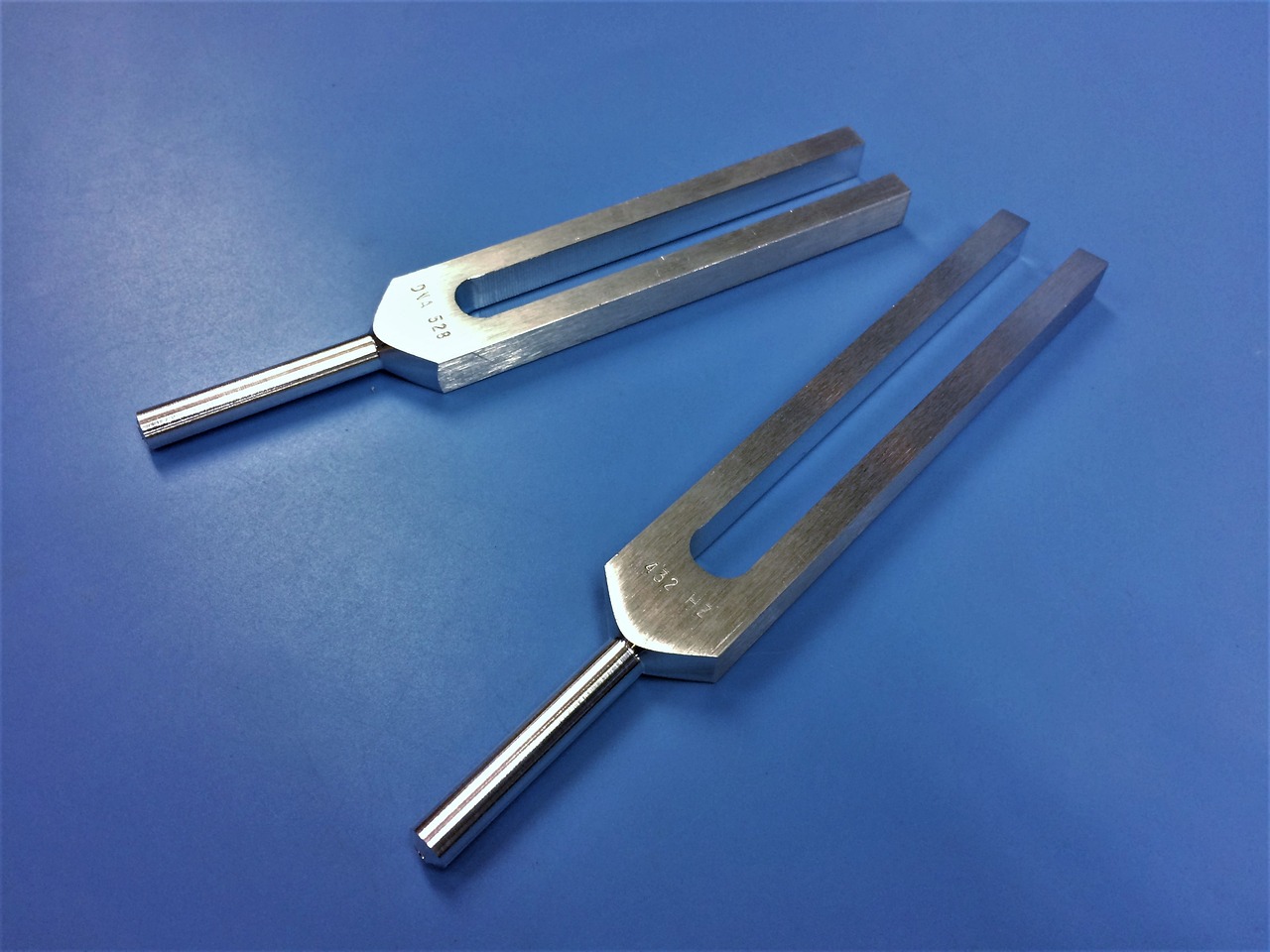If you’ve followed the first parts of this series, you know that sound therapy is an ancient healing method that uses vibrational frequencies to restore balance and health in both mind and body; and it is now gaining recognition in the medical and spiritual communities for its impressive results. Today we will explore some of the most accessible ways you can experience sound therapy.
Whether you are seeking relief from physical pain or depression, or recovering from illness or injury, sound therapy can be an effective remedy that’s literally at the tip of your tongue. While various instruments and trained professionals can certainly offer valuable treatments, sound therapy doesn’t necessarily need to be so complicated, or expensive.
The human voice
We are, in fact, equipped with everything we need to produce healing vibrations on our own. The sound of a human voice, carried through the body by highly conductive materials like water and bone — has a healing effect comparable to the most impressive instruments. Depending on the approach, vocals can be directed towards specific healing or general well-being.

Humming
The simple act of humming, for instance, has numerous health benefits. Humming comes naturally to many people when they are joyful, but it can also be called upon to improve our state of mind. Since it requires a deep inhale followed by a long, regulated exhale — an exercise which has the effect of calming the mind and relaxing the nerves — humming is a useful tool for reducing anxiety and improving focus.
Physically, humming not only improves sinus health by promoting clear air passage, but it also has a broader physical impact via the vagus nerve, which plays a important role in the functioning of our internal organs. As it runs directly past the vocal cords, humming vibrations can massage the vagus nerve, and naturally deactivate the limbic system, our “fight or flight” instinct that causes irrational emotional behavior under stress.
Success
You are now signed up for our newsletter
Success
Check your email to complete sign up
You don’t even need to be able to carry a tune to hum. Simply humming a single note repeatedly for a few minutes a day can be sufficient to initiate positive change. Of course, if humming a tune is agreeable, then it will be even easier to make a habit of it.
Chanting
Chanting works by the same principle, but is more structured and purposeful. Chanted phrases or words are usually sacred or spiritual in nature, and appeal to a higher realm of consciousness. Gregorian chants, for instance, are sung prayers with powerful healing resonance, while the well-known “OM” is a simple, yet profound chant derived from Vedic Sanskrit hymns.
In addition to the physical changes brought about by vocal vibrations, chanting a mantra invokes a deep sense of peace in its connection with the Divine. This mindful and meditative practice requires a purity of thought that invites deep cleansing and healing of the heart — both figuratively and literally.
Chanting has been shown to improve circulation, lower blood pressure and stabilize heart rate; along with alleviating anxiety and improving focus.

Singing
If you’re not ready to take your voice to a spiritual level, just plain singing also has amazing therapeutic benefits. An abundance of research on the subject has shown that singing can boost immunity, relieve stress, alleviate pain (both physical and emotional), improve respiratory and heart health, enhance memory and cognition, and help with a variety of speech difficulties.
Whether you chime in to recorded music, join a choir, or sing in the shower, singing elevates mood by reducing cortisol (the stress hormone) and releasing oxytocin (the love hormone). Singing in a group not only builds social connections, but also stimulates the release of endorphins, which increase our tolerance for pain.
Like humming, singing promotes free air passage between the sinuses and the nasal cavity, and research indicates that singers are less likely to have snoring problems than non-singers. Because it gives the lungs a good workout, regular singing can be beneficial in treating a variety of respiratory conditions as well.

Instruments of sound therapy
For those who are hesitant to be vocal, various instruments can be used to conjure up powerful healing resonance, and may even facilitate using the voice as an accompaniment.
There are countless ways to produce healing sounds, through both traditional and modern means. Fascinating, engaging, and sometimes exotic, musical instruments are fun and exciting to explore, but can be expensive and cumbersome to collect. Fortunately, some of the most commonly used sound therapy instruments are readily available, affordable and conveniently compact.
If you’re looking to implement tools in your sound therapy, consider singing bowls, tuning forks, and a good set of sleep headphones.

Singing bowls
Singing bowls are an ancient instrument believed to have been used by Tibetan monks in meditation. These sturdy metal bowls have become wildly popular with a growing interest in spiritual work today. Most bowls are meant to be held in the hand, while rich and varied tones are be produced by either striking or stroking the rim with a wooden mallet.
Conversely, crystal singing bowls are valued for their pure, single tones. These fragile vessels are typically sold in stackable sets — to provide a number of frequencies aimed at different aspects of healing. They are usually placed over a rubber ring on the floor for meditation (although you can also find them with a stem for holding), and are played in a similar fashion.
Both types of singing bowls stimulate a calming, focused energy that is the foundation for healing, and some are intended for balancing and activating specific energy centers.

Tuning forks
Tuning forks, derived from the very same tool for tuning instruments, employ precise frequencies to restore balance in specific areas of the body. While their sound may be subtle, their resonance is capable of harmonizing our inner workings at the cellular level.
The forks are activated by striking with a rubber mallet, and holding by the stem near the affected area. One should be in a calm and comfortable state, free of distractions, to fully take in the benefits. Weighted forks have a more intense vibration, and are slightly more expensive.
You may choose to use a frequency designed for one pinpointed ailment, or adopt a general wellness approach with a more universal frequency, like 432 Hz or 528 Hz. Using two different frequencies together can be a powerful way to release blocked energy. Forks of 136.1 Hz and 128 Hz, for example, have an amplified healing effect when used in this way.
The problem with incorporating instruments into your sound therapy is that it adds a physical activity that can make self-treatment clumsy at first. With practice, playing the instrument becomes natural and meditative, but you may wish to enlist a partner for this endeavor.

Sound bath
A sound bath employs many different instruments to surround the relaxed mind and body with a symphony of tones that resonate deep healing and balancing energies. Like a massage without physical touch, the sound bath is exceptional for releasing tensions of all sorts and tapping into the body’s natural healing potential.
Impossible to perform on one’s own, sound baths can be experienced at many wellness centers or holistic health clinics. An individual bath is usually well over $100, although group sessions can be arranged for a lower cost. Alternatively, there is an abundance of sound bath videos online that are convenient, effective, and free.
Sound quality is the biggest concern with online therapy. You definitely don’t want to be listening from your phone. Instead, invest in a pair of comfortable, quality sleep headphones to ensure good sound without the bulk. Create an uncluttered, relaxing environment for your bath, and lie down to enjoy the soothing sounds at a low volume. Whether you remain awake to observe the effect or fall into a deep slumber, the healing frequencies will be doing their work all the same.
Whichever route you take, it is important to remember that the power to heal lies within. The selfless wish to live in harmony with the universe has a healing vibration that is stronger than any audible frequency. Perhaps the most valuable thing about sound therapy is its ability to help us break through the stubborn notions that hinder our true thoughts from guiding us toward perfection.













